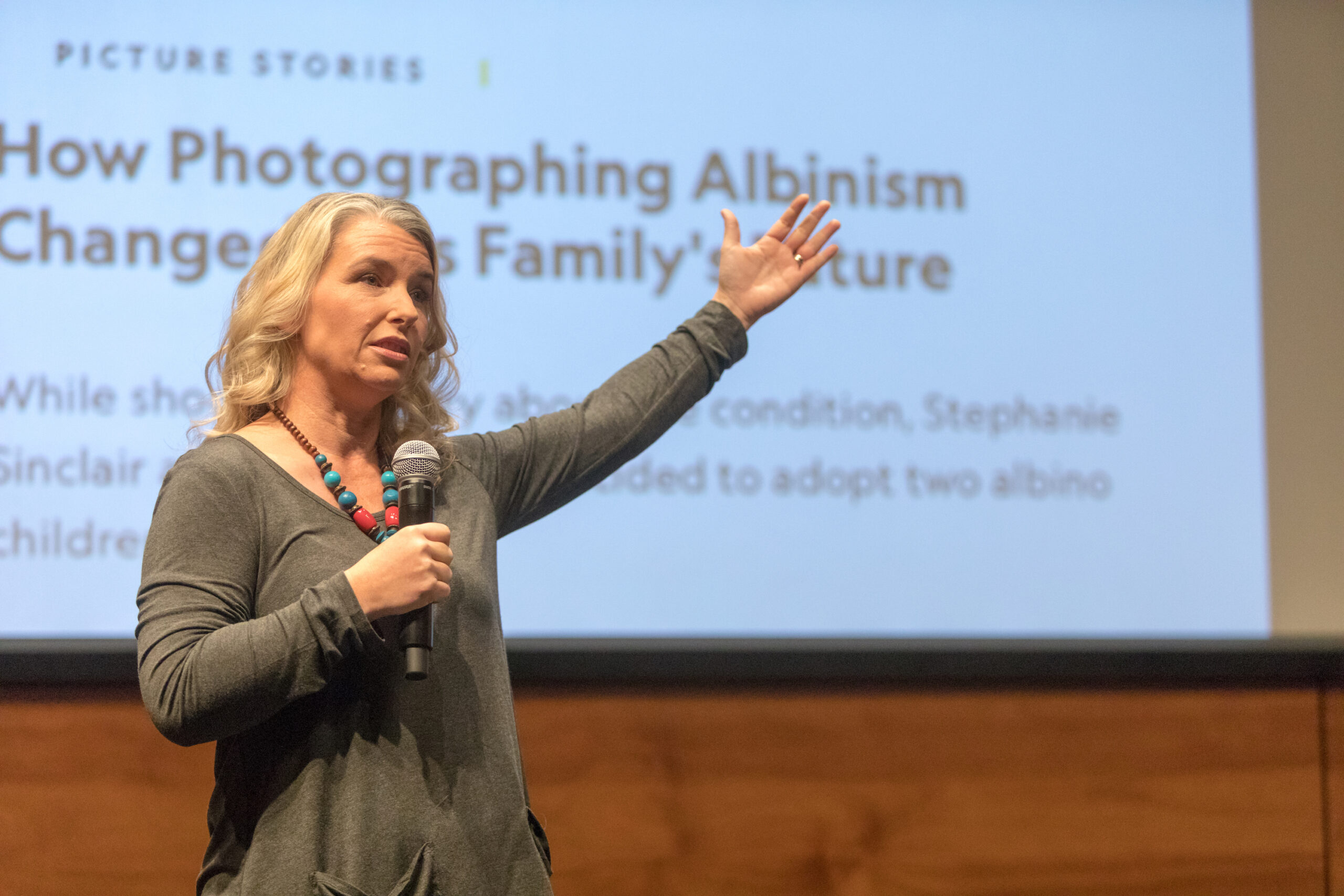The Backpack Journalism program debuted its sixth documentary, “The Displaced,” a short film on refugees in Uganda from the 2018 cohort, to an almost full Harper Auditorium on Tuesday. In combination with the film’s premiere, National Geographic and New York Times Magazine photographer Stephanie Sinclair spoke to attendees about advocacy through visual storytelling.
Sinclair, a Canon Explorer of Light and Pulitzer Prize-winning photojournalist, known for capturing sensitive gender and human rights issues around the world, was brought to Creighton through a partnership with Canon.
Sinclair shared her experiences and how she has arrived at her career today, focusing on how she came to her specialization in women’s and girls’ rights, a topic addressed in “The Displaced.”
Sharing some of the personal stories she was told by her photo subjects in the Middle East, including girls who had lit themselves on fire and one who had survived a stabbing from her husband, Sinclair told the audience what she had learned after studying women’s and girls rights for 15 years and related it back to the documentary.
“This isn’t really about child marriage. It’s about the value of girls,” said Sinclair. “Girls are really seen for their bodies, their sexuality, their fertility; just like you saw the girls in the film saying, they’re valued for their bodies and for labor.”
“If you can raise the age of marriage, so many things will change for girls.”
During Sinclair’s years in the Middle East, she said she was “able to see the deep trauma in its worst form, really as a result of when girls don’t have any rights.”
Members of Backpack Journalism traveled to the border of South Sudan and Uganda in early June to film footage for “The Displaced,” a documentary that focused on refugees in Uganda and the conditions and struggles they face.
The documentary displayed the lack of mercy and compassion shown for the nearly 1.5 million refugees located there who have fled violence and are living in poverty. It also highlighted the disproportionate placement of suffering on female refugees, noting the tendency of child marriage among young girls.
“Some parents don’t value education, they value girls as women and wealth,” said one young, female refugee in the film.
Sinclair, whose latest story covers women in northern Nigeria, ended her talk emphasizing and praising visual journalism and a positive look toward the future.
“I’m optimistic about our future. Really intimately knowing each other, through visuals, is the way forward,” said Sinclair.
There was a question and answer session between Sinclair’s talk and the showing of the film, during which student filmmakers answered questions from the audience regarding the process of making the film and what they took away and could implement in their day-to-day lives.
Elizabeth Rudigier, senior in the College of Arts and Sciences, noted the care, caution and respect she was treated with by her guide during a malaria test while traveling for the film.
“That’s something I took away from this, the care he treated me with,” said Rudiger.
Other students attested to the impact people they met abroad left on them.
When asked about the young women interviewed in the film, Isabelle Senechal, lead story designer for the film and senior in the College of Arts and Sciences, responded, “they lit up the camera. I really expect those girls to change the world someday.”
As a part of the 6-credit Backpack Journalism course, students are required to blog about their experiences traveling and to assist with filming, writing and production of the documentary.
According to its website, the program uses “new media tools and relatively inexpensive video equipment to produce documentaries about people in developing countries and marginalized societies.”
The Backpack Journalism program is offered every other year and has traveled to places including Alaska, the Mexico-Arizona border and the Dominican Republic.
“Bearing witness is what journalism does at its best, telling the stories of people who are often marginalized or ignored,” says the Backpack Journalism website. “And bearing witness also gets to the heart of the Jesuit call in our time to ‘go to the margins’ of society through service and action.”
